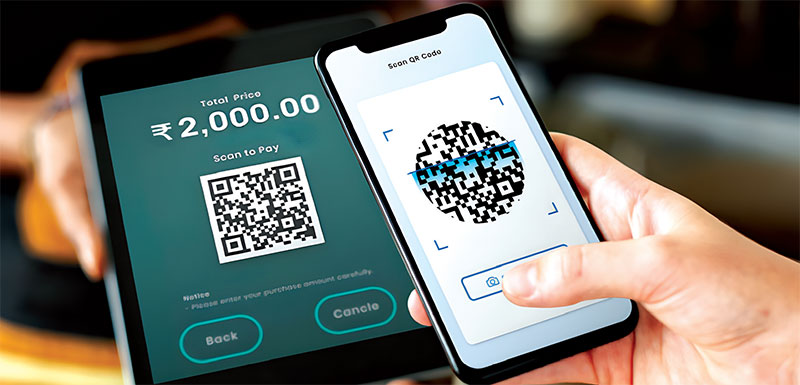Blitz Bureau
NEW DELHI: From September 15, 2025, India’s Unified Payments Interface (UPI) service allows much larger payments for certain merchants. According to a report in Financial Express, the National Payments Corporation of India (NPCI) has raised several transaction limits, particularly for high value sectors like insurance, investments, travel, and credit card bills.
P2M (person to merchant) transactions: For merchants who are verified and fall under specific categories, users will now be able to make up to Rs 5 lakh per transaction in many cases, with a daily cap of Rs 10 lakh.
Fintech experts have welcomed these changes, highlighting the potential of digital adoption in under penetrated high-value segments. Akash Sinha, CEO & Co-Founder of Cash-free Payments, said the move is timely. “Raising UPI limits to Rs 5 lakh per transaction and Rs 10 lakh per day is a timely move that addresses a real challenge for businesses handling high-value payments.
Payment up to Rs 10 lakh allowed for verified merchants
Some sector specific changes:
1. For insurance and capital market investments, the per transaction limit has increased from Rs 2 lakh to Rs 5 lakh, and the daily allowed aggregate is Rs 10 lakh.
2. On the Government e Marketplace (GEM) for earnest money, tax payments, etc. the per transaction limit has been raised from Rs 1 lakh to Rs 5 lakh.
3. Travel bookings will also get higher limits: from Rs 1 lakh to Rs 5 lakh per transaction, with Rs 10 lakh daily cap.
4. Credit card bill payments and loan / EMI collections are similarly relaxed.
5. For jewellery purchases, the limits have gone up more modestly from Rs 1 lakh to Rs 2 lakh per transaction, and up to Rs 6 lakh per day.
The previous limit for person to person (P2P) transactions remains unchanged at Rs 1 lakh per day. The benefits of these are mentioned below.
1. Convenience: People often face trouble when they need to pay large amounts (say for insurance premiums, investment subscriptions, or travel bookings). Earlier, they might have been forced to split the payment into smaller parts or use slower / traditional ways (cheques, bank transfers). With higher UPI limits, those inconveniences reduce.
2. Faster digital adoption These changes help push more high value transactions into the digital world. Big payments can now happen instantly through UPI, which could encourage more people and businesses to use UPI more broadly.
3. Better for businesses & merchants Merchants in sectors like insurance, travel, capital markets can expect fewer failures or drop offs at checkout due to payment limits. Also, easier payments can improve customer satisfaction
However there are certain precautions and safeguards that individuals should follow:
1. These higher limits apply only to verified merchants in the specified categories. That means not every merchant will automatically qualify.
2. Because the risk with big payments is higher, NPCI and payment providers will strengthen security with multi factor authentication, monitoring of suspicious activity and merchant verification.
3. Users do not need to take special steps to enable the higher limit. Once a merchant is eligible / verified, the higher limit is available automatically.
Others than these the challenges posed by the NPCI decision are:
1. Some users may still distrust or hesitate with very large digital transactions. Security concerns, fraud fears may persist.
2. Not all merchants will be verified, so in many cases, users might still hit old limits.
3. Banks, payment apps, and UPI interface devices will need to ensure their systems support the new limits without glitches.
This UPI change is a big move toward making high value digital transactions simpler and more accessible. It shows that India’s digital payments infrastructure is maturing not just for small payments, but for large, serious ones too.



